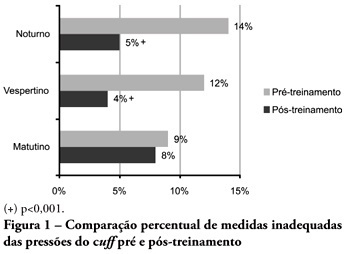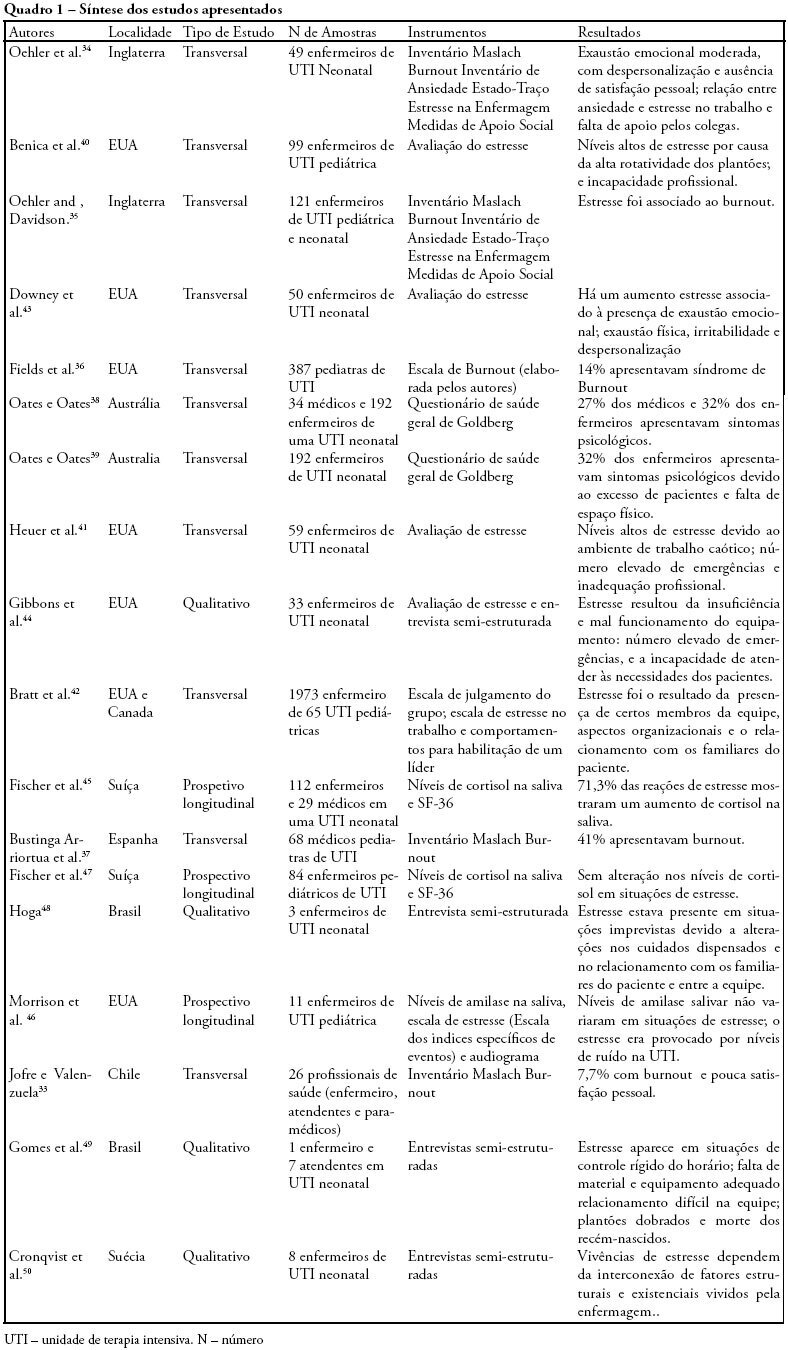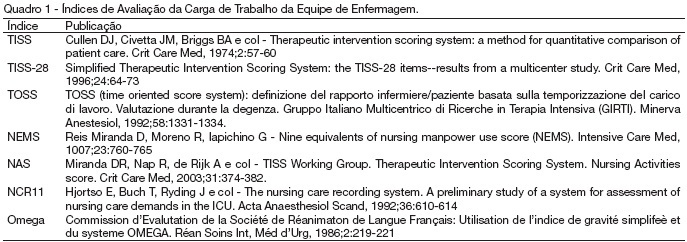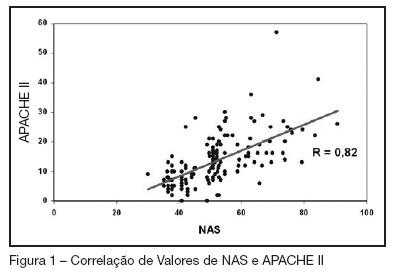Abstract
Rev Bras Ter Intensiva. 2010;22(2):192-195
DOI 10.1590/S0103-507X2010000200014
OBJECTIVES: Direct cuff pressure to the tracheal wall can cause damage. This paper aimed to verify the effectiveness of nursing team training on cuff pressure control. METHODS: A retrospective survey was initially made on the records of cuff pressure measurements from January 2007 to June 2008 and the inadequacy percent was verified. Next, a nursing team training program was provided involving all nursing shift teams during June 2008, and after the training the appropriate cuff pressures proportion was prospectively recorded between June and December 2008. The proportion of inappropriate cuff pressure was compared between the work shifts (morning, afternoon and evening-night) and between pre- and post-training, using the qualitative Chi-square test. The 5% limit (p<0.05) was considered for significant differences. RESULTS: For the pre-training period, inappropriate cuff pressure measures (over 30cmH2O) during morning, afternoon and evening-night shifts were 9.2%, 11.9% and 13.7%, respectively. For the post-training phase, 7.6%, 4.1% and 5.2% inappropriate cuff-pressures were identified for the morning, afternoon and evening-night shifts, respectively, with a significant reduction for the afternoon and evening-night shifts, respectively (p<0.001). CONCLUSION: Nursing team training was effective for inadequate cuff pressure harms awareness improvement, and resulted in safer pressure levels.

Abstract
Rev Bras Ter Intensiva. 2009;21(2):148-154
DOI 10.1590/S0103-507X2009000200006
PURPOSE: Identify and evaluate the perception of Intensivist Nurses in a University Hospital in Londrina, of dysthanasia in terminal patients at the Intensive Care Unit. METHODS: Qualitative study. Data were collected by semi-structured recorded interview involving nine nurses working in a university hospital intensive care units, during January 2009. A thematic analysis was used to evaluate subjects' speech and identify discussion categories. RESULTS: Five categories were identified, discussed based on the authors' experience and literature, namely: measures prolonging life of patients with no chance of cure in the intensive care unit; nurses' actions/reactions when facing dysthanasia; reasons leading to prolonging life of patients with no chance of cure; nurses' feelings about dysthanasia and life prolongation; care measures as opposed to dysthanasia. CONCLUSION: Experiencing of nurses when facing dysthanasia actions was shown to be complex, a factor of suffering, frustration and discomfort for these professionals. In the nurses' view, lack of communication stands out as an important factor for dysthanasia, and measures to replace dysthanasia are those relieving suffering.
Abstract
Rev Bras Ter Intensiva. 2009;21(1):58-64
DOI 10.1590/S0103-507X2009000100009
Delirium is frequently observed in intensive care unit patients and its occurrence is related to increased morbidity and mortality, length of stay, functional decline and high costs. The Confusion Assessment Method for Intensive Care Unit is a tool that facilitates early identification and occurrence of delirium among intubated patients. Objective: To verify the aspects of delirium studied by means of the Confusion Assessment Method for Intensive Care Unit. A literature review was conducted in the LILACS, MedLine, PubMed and CINAHL databases, from 2001, when the Confusion Assessment Method for Intensive Care Unit was validated, to 2008. Descriptors used for LILACS, MedLine and PubMed were delirium and intensive care unit, while for the CINAHL database, delirium and intensive care were used. From 293 articles, 35 were selected. The aspects analyzed disclosed, different types of delirium in different intensive care units. Variation in sensitivity was of 93% to 100% and variation in specificity, 89% to 100% of the Confusion Assessment Method for Intensive Care Unit, an important tool for detection, characterization and control of delirium and its impact. The aspects of delirium studied by means of the Confusion Assessment Method for Intensive Care Unit were: the performance index, identification, management, cost of treatment, morbidity and mortality due to delirium.

Abstract
Rev Bras Ter Intensiva. 2008;20(3):261-266
DOI 10.1590/S0103-507X2008000300009
OBJECTIVES: Bibliographic review on occupational stress and burnout presence in physicians and nurses that work in pediatric and neonatal intensive care units. METHODS: The articles were selected from the MedLine, LILACS and SciElo data base using the key words: stress, burnout, physicians, nursing, intensive care unit, pediatric intensive care unit and neonatal intensive care unit. The studied period ranged from 1990 to 2007. RESULTS: Health professionals who work in pediatric and neonatal intensive care units are strong candidates for developing stress, psychological alterations and burnout syndrome. Researches on this subject identified important alterations suffered by these physicians and nurses, such as: work overload, burnout, desires of giving up their jobs, high levels of cortisol, among other alterations. CONCLUSIONS: Professionals, who work in pediatric and neonatal intensive care units, due to the specificity of their job, are liable to develop occupational stress, and consequently burnout. These results suggest the need for further research with the objective of developing preventive measures and intervention models.

Abstract
Rev Bras Ter Intensiva. 2006;18(3):276-281
DOI 10.1590/S0103-507X2006000300010
BACKGROUND AND OBJECTIVES: ICU is the hospital sectors that have interrupt assistance. Assistance with quality is a challenge for those who run human resources. It is also important to know the risk of the patient to the better use of resources. The aim of this study is to identify most used severity indexes in intensive care and classify them according with their finality METHODS: Library research (medline), using the key words: "Scoring systems and ICU". The articles were selected in the period from March to May 2005. Books and thesis were also used. RESULTS: We identify seven indexes evaluating nursing workload: TISS, TISS-28, TOSS, NEMS, NAS, NCR11, and Omega. We identify 21 indexes evaluating clinical status: Killip Glasgow CRI APACHE II e III, Ransom, SS, SSS, SAPS, MLR, MPM, LIS, ARPI, SAPS (II), MPM II, ODIN, Ontario, MODS, SOFA, LOD, and PSI). CONCLUSIONS: Although indexes evaluating nursing workload are in a lower number, they are also fundamental to preview the need for material and human resources.

Abstract
Rev Bras Ter Intensiva. 2006;18(2):143-147
DOI 10.1590/S0103-507X2006000200007
BACKGROUND AND OBJECTIVES: In general, as ICU nursing staff is always close from the patients, their members most commonly identify the cardiac arrest and begin the cardiac and pulmonary resuscitation (CPR). The objective of this study was to evaluate the critical care nursing staff theoretical knowledge about cardiac arrest and CPR, as a basis for an in-service training. METHODS: Descriptive research with quantitative approach developed in an ICU, of general hospital at state of Santa Catarina - Brazil. The population was composed of nurses, nursing technicians and nursing assistants. The data were collected with a structured questionnaire with questions about the theme. The results were analyzed based on medical and nursing bibliographies about cardiac arrest and cardiopulmonary resuscitation. RESULTS: Twenty-six professionals answered the questionnaire, fifty four percent worked for more than two years in the ICU. The cardiac arrest signals were identified correctly by only 15.4% of the professionals. The main causes of cardiac arrest were mentioned correctly by 53.8% of participants. Answered correctly the most used medications in a CPR 65.4% of the participants. CONCLUSIONS: The work time of the nursing professionals in ICU and their professional category had influenced positively the knowledge about CPR and cardiac arrest. The fact that the majority of the participants (84.6%) do not identify correctly cardiac arrest and 34.6% do not recognize the medications used, may compromise the beginning, organization and quickness of the maneuvers. The study may present some basis for the theoretical approach of an in-service training program for the ICU nursing staff of the hospital where the study was held.
Abstract
Rev Bras Ter Intensiva. 2008;20(1):68-76
DOI 10.1590/S0103-507X2008000100011
BACKGROUND AND OBJECTIVES: In this study we discuss about risks to health of intensive care unity staff and suggest a proposal of integral approach of health. CONTENTS: Literature review, from 1997 to 2007, at Bireme database about "health education", "intensive care unity", "nursing" and "occupational health", regardless of design of study. CONCLUSIONS: All studies show that the environment of intensive care unity is unhealthy, which is also due to habits and attitudes of ICU health professionals. An approach to health education would be beneficial to minimize the problem. Strategies for continuing education are appropriate both in the prevention of occupational and environmental risks in intensive care units.
Abstract
Rev Bras Ter Intensiva. 2007;19(3):327-330
DOI 10.1590/S0103-507X2007000300010
BACKGROUND AND OBJECTIVES: Searching the literature, we found no studies which correlate the NAS (Nursing Activities Score), who determines the real time of nursing evaluation and patient care, with mortality for prognostic index. The objectives this study were to know the values of the NAS score at ours service, try to find correlations between this values and the APACHE II index and to analyze the mortality rates with NAS scores. METHODS: This is a prospective ICU inpatient study from July to November/2005. Our data's of the APACHE II score were recorded from the QuaTI system study. Qui-square test or equivalent was done to compare the proportions. For the analyses we utilized the EPI-INFO-6 software. RESULTS: The sample was 148 patients, mean age of 55.5 years with 59.4% males. The mean hospitalization time were 9.1 days, mortality rate of 29.7%, mean NAS score of 51.5% and mean APACHE II score of 13.4. There were a positive correlation ship between NAS and APACHE II index (R = 0.82). Selecting only the patients with NAS more than 51 we found that 41 in 83 died and 42 in 83 survived. Those whose NAS were under 51, only 3 in 65 died and 62 in 65 survived (p < 0.005), identifying an statistically significant group. CONCLUSIONS: In this study the mean value of NAS were 51.5%. There were good correlation with the APACHE II index and we shown that the mortality rate was high in the higher NAS values.

Search
Search in:
Case reports (56) Child (53) Coronavirus infections (34) COVID-19 (46) Critical care (116) Critical illness (54) Extracorporeal membrane oxygenation (26) Infant, newborn (27) Intensive care (72) Intensive care units (256) Intensive care units, pediatric (31) mechanical ventilation (38) Mortality (76) Physical therapy modalities (28) Prognosis (61) Respiration, artificial (119) Respiratory insufficiency (26) risk factors (34) SARS-CoV-2 (28) Sepsis (98)